
9+ Logistics Risk Assessment Templates in PDF | MS Word
Risks are everywhere, and they significantly affect businesses. And when dealing with the supply chain, transportation, warehousing, and manufacturing all…
May 10, 2023
How secure is your company? Yes, you might have already done a lot of security tests and assessments to ensure that your physical company is completely and utterly secure. Now, let us look at it differently. How secure is your companies system? In the age of the Internet of Things, security does not only refer to how safe the physical building of your company is. It also means the security of your online space. In the wake of hacks, data-leaks, malware, and denial of service attacks (DoS), it is important to know how vulnerable your system is and what those vulnerabilities are. You may also see Risk Assessment Templates.

Vulnerability assessments are done to identify the vulnerabilities of a system. Not only that but in a vulnerability assessment, the vulnerabilities identified are also quantified and prioritized. Vulnerability assessments are not only performed to information technology systems. Different supply systems like energy supply systems and water supply systems can also benefit from this type of assessment. Other systems where vulnerability assessments can be conducted are for transportation systems and communication systems. You can also see more on Assessment Templates.
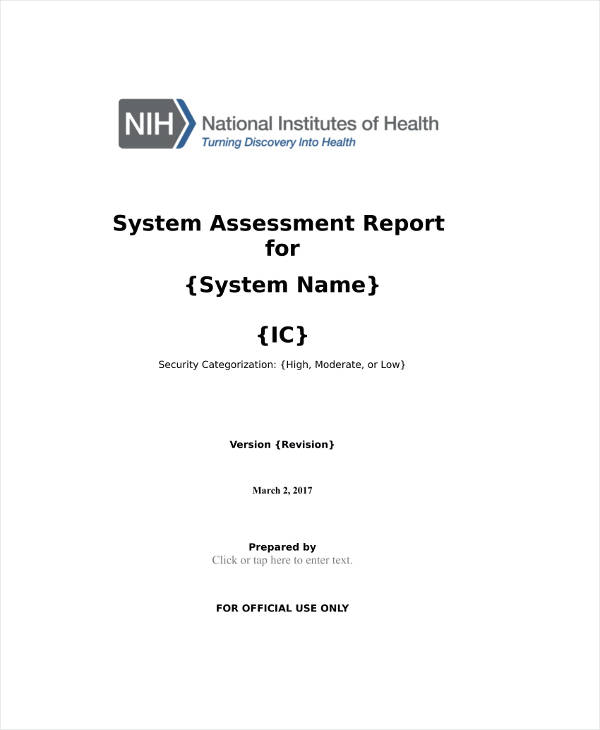 cbiit.cancer.gov
cbiit.cancer.gov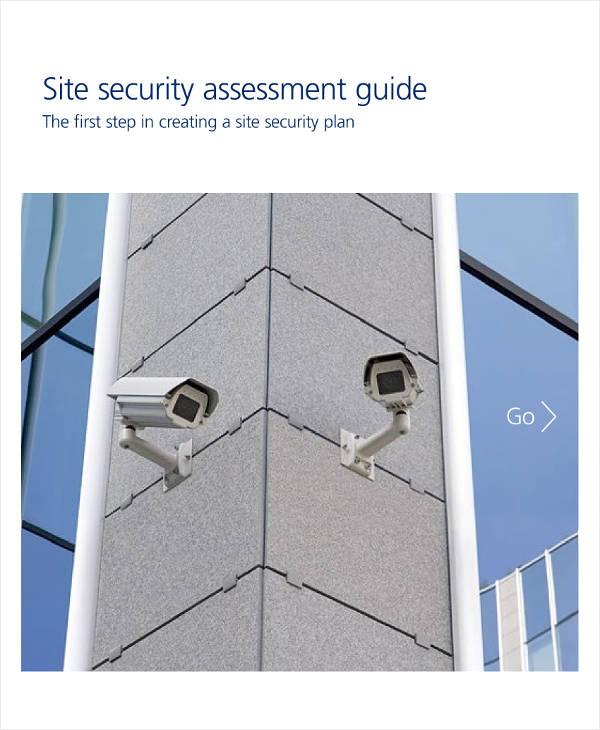 zurichna.com
zurichna.com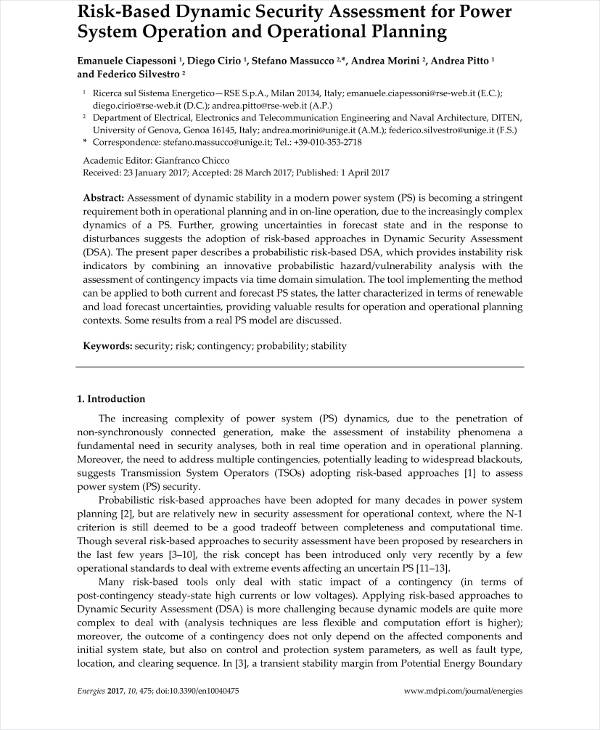 res.mdpi.com
res.mdpi.comConducting vulnerability assessments ensure that common system vulnerabilities are accounted for. If assessments are done regularly enough new threats could be identified as soon as they appear. As much as possible, vulnerability assessments should be clear and correct. Afterall, the human factor is still considered the most vulnerable point of any system. You may also see Assessment Genogram Templates.
Being that they are the user, operator, designer, and architects of the system, it still falls on them the main responsibility of making sure that a system is secure. It is for this reason that social engineering, that is the psychological manipulation of a person into tricking a person to divulge sensitive information, has become a rising security concern. You may also see Assessment Plans.
Vulnerability, threat, and breach are the three most important words when talking about system threats.
The vulnerability is a system weakness that can be exploited by a potential attacker. Vulnerabilities could range to a number of things from devices connected to your system to unsafe passwords. Unencrypted sensitive information is some of the more common types of vulnerability. You may also see School Assessment Templates.
A threat is composed of three things: a person/object who exploits the system, a motive for the exploitation, and a vulnerability. Your system becomes threatened when the person who is motivated to exploit the system find a vulnerability in it. Motivation can include upset former employees, predators who are looking to steal credit card number or personal identity information or hackers for the heck of it. You may also see Assessment Sheet Templates.
A breach is a successful attack on the system. Oftentimes, massive data and security breaches are reported to the public. Some of the more recent data breaches include that of the Equifax data breach and the breach from the Friend Finder Network. You may also see Assessment Form in Word Templates.
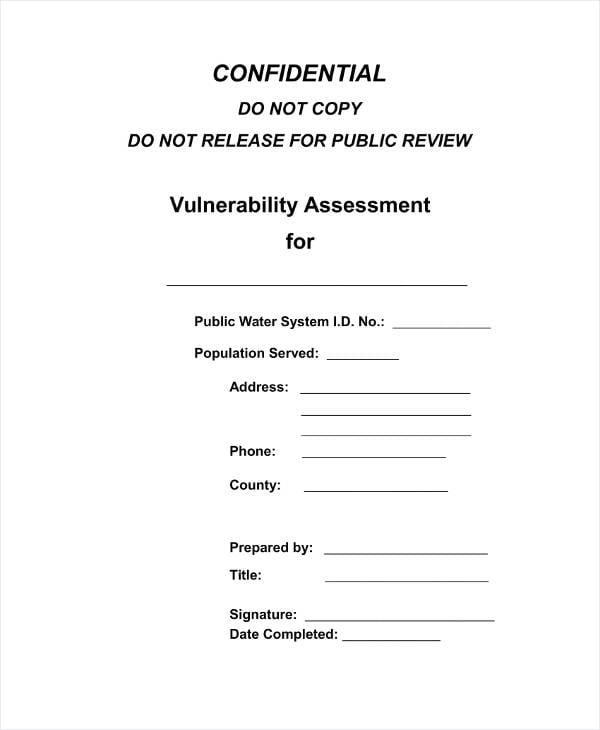 nyruralwater.org
nyruralwater.org itsecurity.uiowa.edu
itsecurity.uiowa.edu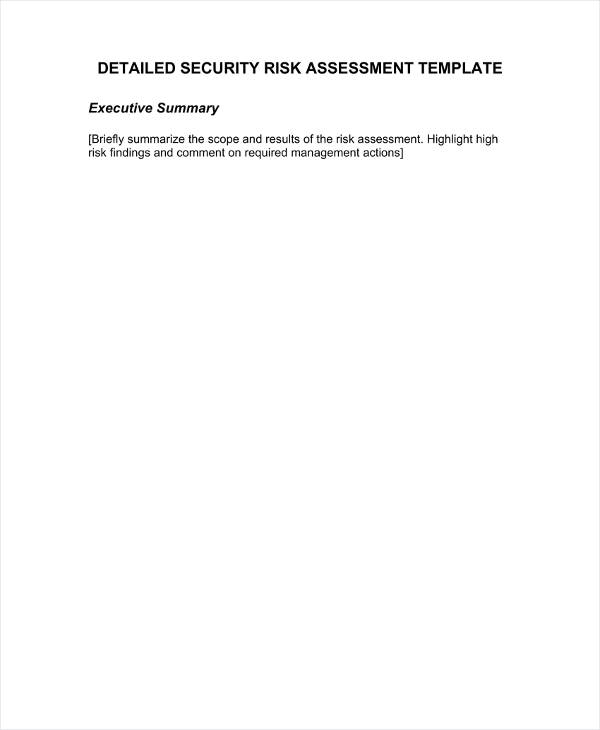 nysforum.org
nysforum.org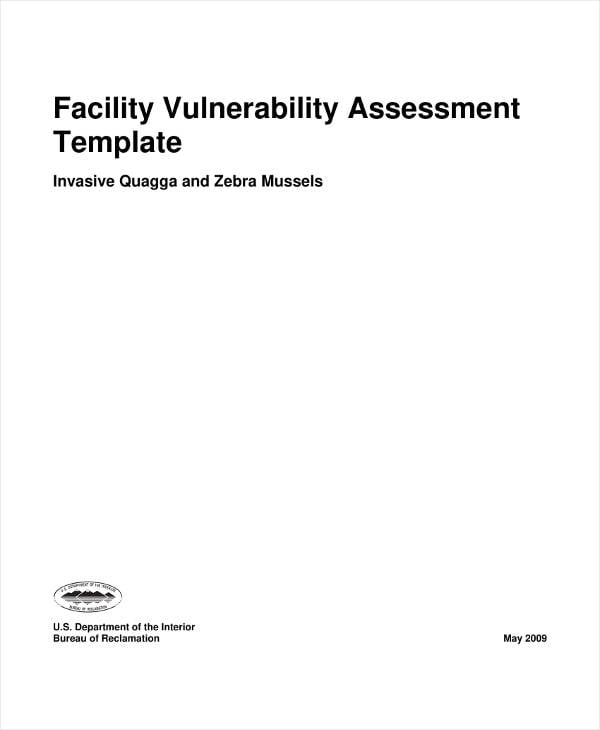 usbr.gov
usbr.govMost data and system breaches can be prevented if a vulnerability can be addressed before it can become a threat. Vulnerability assessments offer numerous benefits for the security of your company. Having regular assessments can root out vulnerabilities and address them before it could evolve into a threat. You may also see Assessment Checklists.
Other primary benefits of regular vulnerability assessments include:
Some common steps to in conducting vulnerability assessments include:
This includes identifying and understanding the organization and operation of your system. For network systems, this could include several issues including issues in privacy, business processes and regularity compliance among others.
Locating them and identifying which data contains sensitive information is a key step in assessing your security flaws as it will help you figure out your priorities. This step also includes identifying which data or apps are the most vulnerable to attack. You may also see Assessment Checklist in Pages Templates.
Hidden data sources may be the most vulnerable parts an attack can exploit. Hidden data sources may not have security features in them and as they are hidden, it would be to forget about them or consider them as not a threat. Keep track of them and strengthen their security. You may also see self-assessment in word templates.
These servers contain sensitive data for your company or business. Identifying them could lead to figuring out which of these are most vulnerable to attacks and thus can help you bolster up your defenses. You may also see Network Administration Templates.
You never know which of these security measures are adequate and which are outdated. Keep track of them to see if they are updated and are up to the task of defending your system from newer types of threats. You may also see Sample Templates.
This step will not only confirm your security vulnerabilities, it will also take a simple note of vulnerabilities and flaws that you have missed on the earlier steps.
Once you get confirmation of vulnerabilities, it is time to do something to address the issues. More often than not, you will need to develop a network security strategy to remedy the problem. You may also see simple templates.
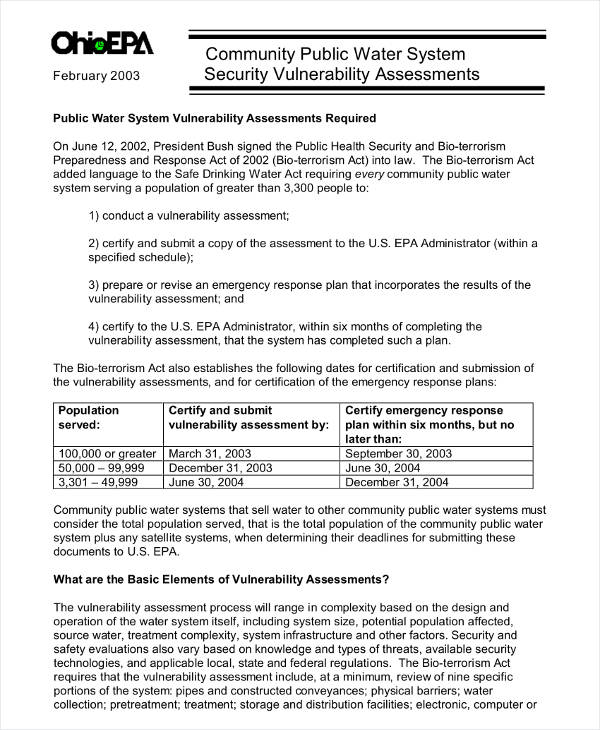 web.epa.state.oh.us
web.epa.state.oh.us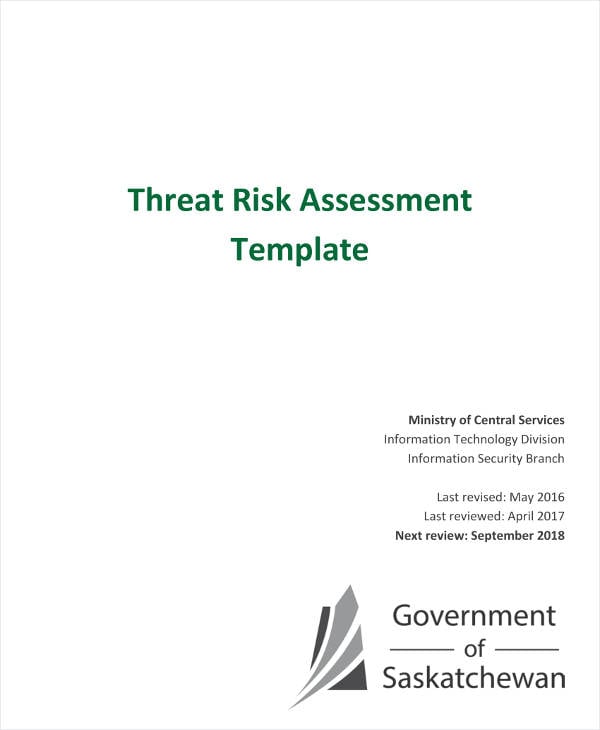 taskroom.sp.saskatchewan.ca
taskroom.sp.saskatchewan.caVulnerabilities can be classified according to the asset class they are related to. This may include:
Vulnerabilities in hardware can include susceptibility to humidity, susceptibility to dust, susceptibility to soiling and susceptibility to unprotected storage. You may also see risk Assessment Genogram in Indesign Templates.
Software vulnerabilities could include insufficiently tested software, software design flaws and lack of audit trail. An audit trail is a kind of security record that logs documentary evidence of the sequence of activities that have affected at any time a specific operation, event or procedure.
Network vulnerabilities can stem from unprotected communication lines or an insecure network architecture
Vulnerabilities from personnel can come from a substandard recruiting process and a lack of security awareness
Vulnerabilities from the physical site often originate from its environment. A physical site could be considered vulnerable if it prone to flooding or if there is an inadequate or unreliable source of power. You may also see Basic Templates.
Organizational vulnerabilities include the lack of regular audits and the lack continuity plans. The plain lack of security is also attributed to an organizational vulnerability. You may also see sample form examples.
It is good practice to identify the type of vulnerability you are dealing with to find adequate and appropriate measures in addressing said vulnerability during the assessment process. You may also see simple form templates.
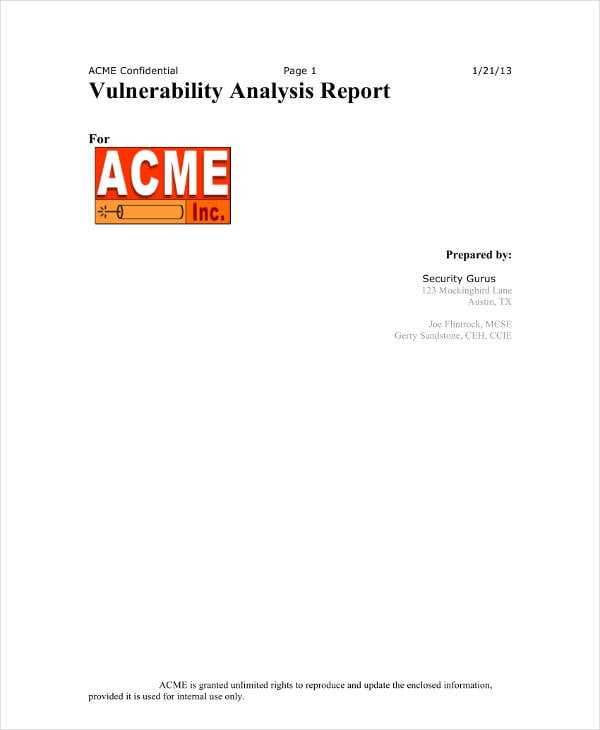 isaca.org
isaca.org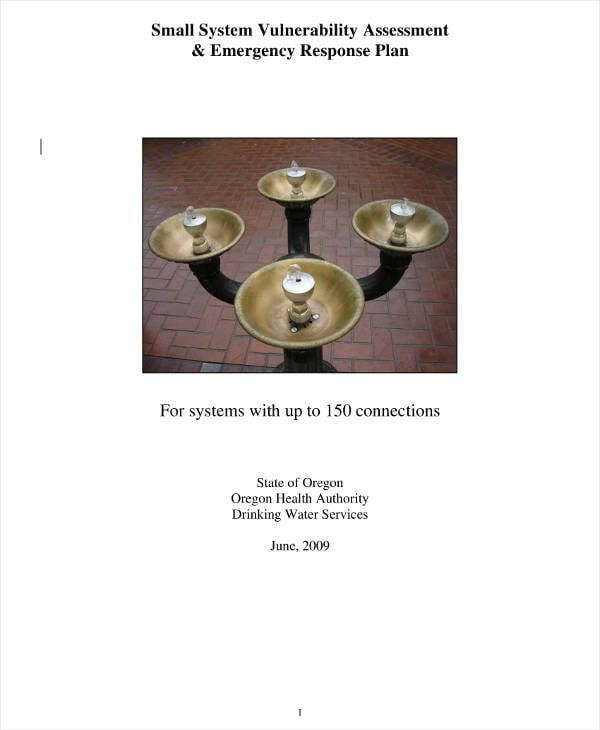 oregon.gov
oregon.govThe more complex a system is, the higher the probability of it being vulnerable.
The use of common elements in a system such as the use of common passwords, well-known codes and software can increase your vulnerability since access to data and knowledge of such elements is also more common. You may also see formal templates.
Not all devices connected to your system are secure. The more things that are connected to your system or network means more point of entries to be exploited by a potential attacker. You may also see Assessment Checklist in Pdf templates.
This vulnerability includes the use of one password for multiple systems, easily memorized passwords and poor password strength. You may also see notice templates.
Sometimes there are flaws from the operating system that can be exploited by viruses and malware which execute commands to authorize access. You may also see construction Risk Assessment in Word Templates.
Bugs can pop up as early as the development process. If these bugs are not addressed, they can be exploited as an entry point of attack. Keep track of software bugs by reading bug sample reports and changelogs on your system.
The sample program could assume that the entered user input is safe.
Sometimes a vulnerability found in an old system can be carried over to the new system.

Risks are everywhere, and they significantly affect businesses. And when dealing with the supply chain, transportation, warehousing, and manufacturing all…

The audit assessment indicates to the general, orderly, examination, evaluation and the analysis of the business marketing conditions, both internal…

Security Assessment Questionnaire (SAQ) is basically a cloud duty for guiding business method management evaluations among your external and internal…

The leadership assessment survey template is formed with the aim of understanding business success to be an instantaneous reflection of…

Portfolio Assessment is the collective term for the assessment of a student’s work. This is the assessment of the student’s…

Formative assessment refers to a large sort of strategy that lecturers use to conduct in-process evaluations of student comprehension, learning…

A fraud risk assessment is a type of management that is a device utilized by the board to distinguish and…

assessment templates word assessment pdf assessment pages assessment free assessment template health assessment hospitality industry risk assessment gifts and hospitality…

The establishment of an audit is referred to as risk assessment. Audit risk assessment methods are performed to acquire an…